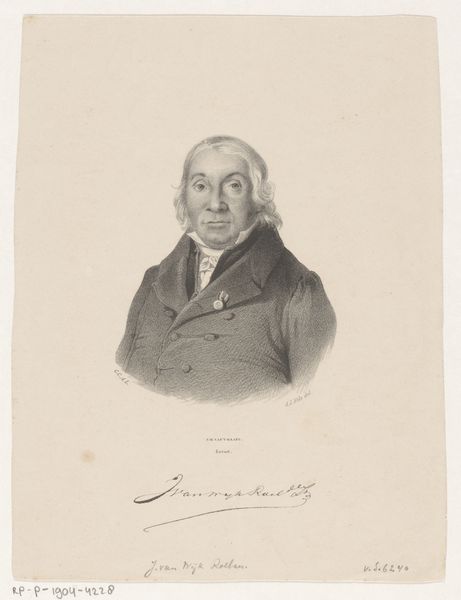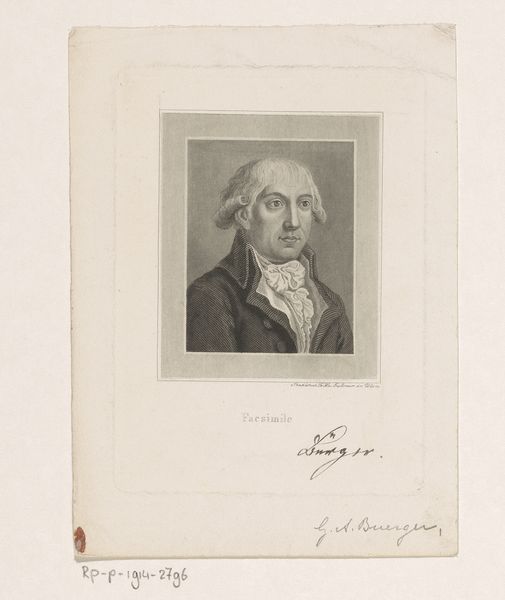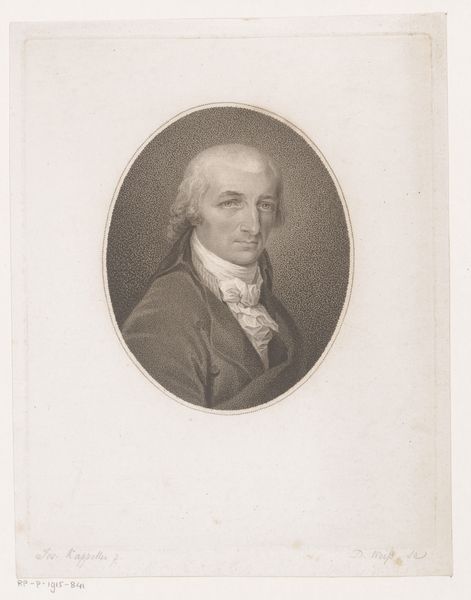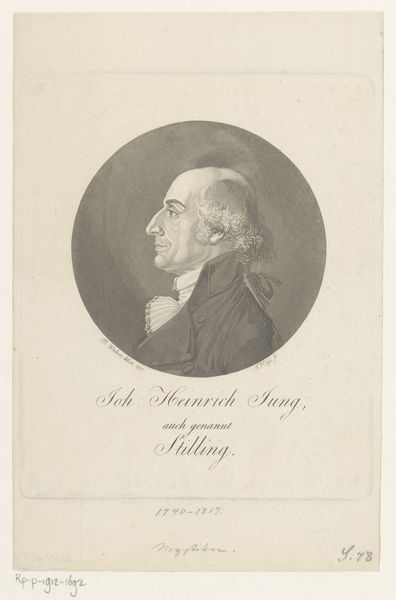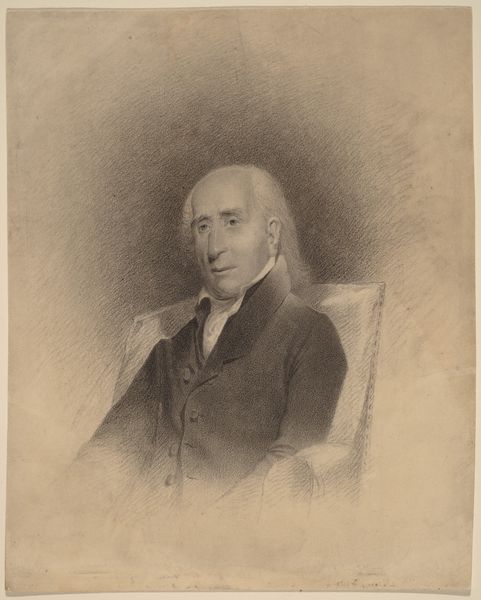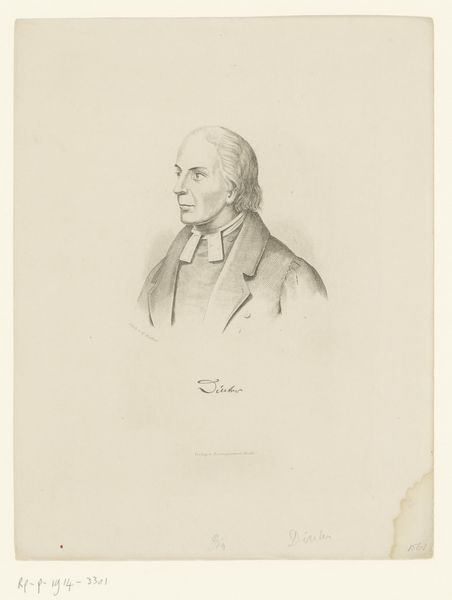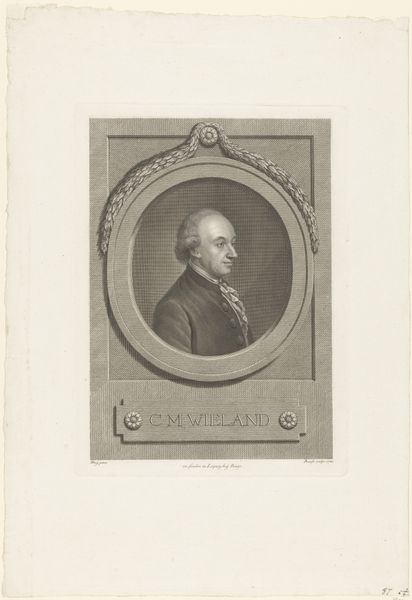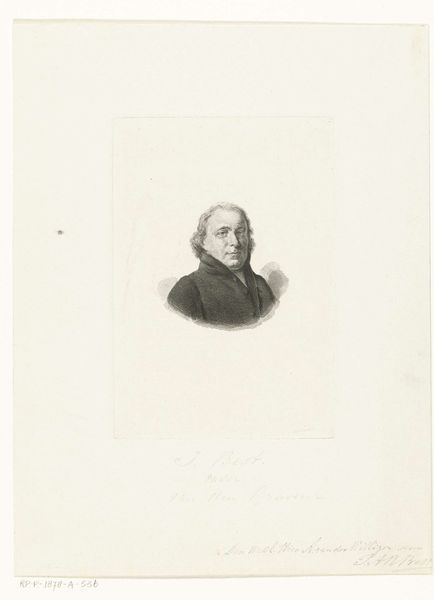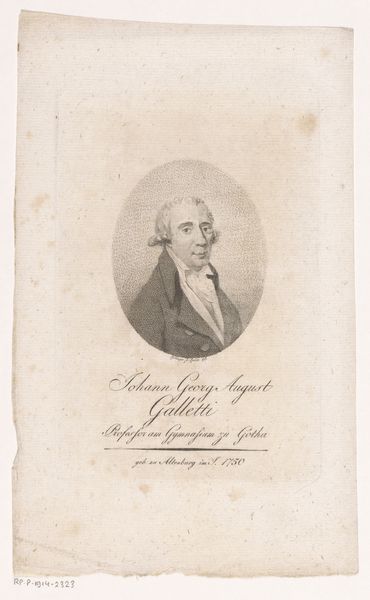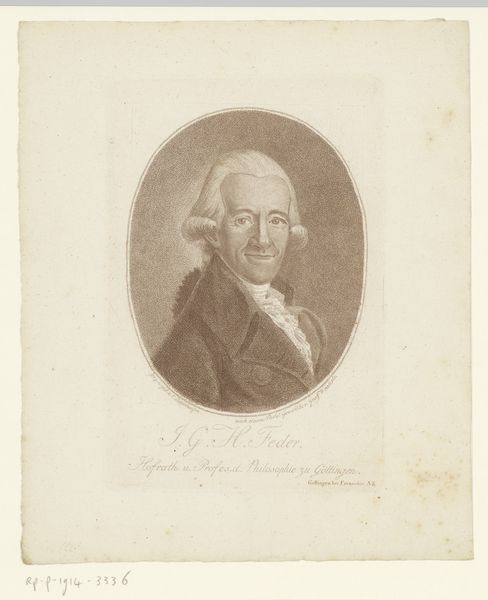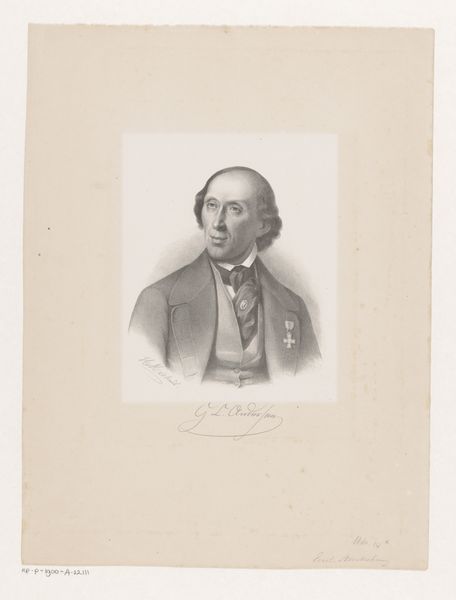
print, engraving
#
portrait
#
neoclacissism
# print
#
engraving
Dimensions: height 245 mm, width 162 mm
Copyright: Rijks Museum: Open Domain
Editor: We're looking at the "Portret van Louis-Marie Prudhomme," an engraving dating back to 1845 by Melchior Péronard. It has a very classical feel, almost severe, given the man's intense gaze. What is your read of this piece, considering its historical and social setting? Curator: Given the context, it's important to remember Prudhomme was a key figure during the French Revolution. How do you think the print medium and the neoclassical style contribute to portraying him? Is it about idealizing the individual, or about creating a public image? Editor: I suppose the neoclassical style lends him a sense of authority and gravitas, maybe connecting him to the ideals of the Republic. Do you think it's attempting to make a political statement? Curator: Precisely. Engravings like these served as a vital form of disseminating images and ideals. Who saw these images, and what messages were they meant to convey? The starkness you mentioned probably aimed to project an image of incorruptible virtue, important for revolutionaries, don't you think? Editor: Yes, absolutely. It definitely speaks to the need to create an ideal of revolutionary leadership. I'm just struck by the level of control in image-making at the time. Curator: Control, and access. These images circulated through specific channels and aimed to shape public opinion. Reflect on who had the power to commission and distribute such images and what kind of narratives they wished to advance. Understanding that unveils so much. Editor: I never considered it that way. Thinking about its function as a kind of propaganda sheds new light on the work. Thanks. Curator: Indeed! Thinking of art as existing in, and shaping public discourse reveals so much. It's about how visual representations impact society.
Comments
No comments
Be the first to comment and join the conversation on the ultimate creative platform.
